Here in Washington we enjoy a vibrant beer culture. We have over 100 breweries making some of the world’s finest craft beer and we have hordes of people who love to drink it. This is not a secret. Our affection for craft beer has not gone unnoticed and apparently the word has gotten out that our craft beer market is not only large, but it is easy to infiltrate as well. Breweries from around the nation seem to be lined up at the border waiting to beset upon us a torrent of beery goodness.
An astounding number of out-of-state breweries entered the Washington market last year alone. Firestone Walker, Russian River, Southern Tier, 21st Amendment, Double Mountain and a number of others appeared on the local beer scene in 2009. Some other relative newcomers, like Victory and Ninkasi, have become rather ubiquitous around Seattle over the last couple of years. By all indications, the trend will continue in 2010.
Don’t misunderstand me. I’m not saying that it is a good thing or a bad thing. I’m just pointing out that it is happening.
In the USA, craft beer sales account for 4% of all beer sales (according to the Brewers Association). In Washington, we greatly exceed that number. It’s purely anecdotal, and I have not been able to find anything official, but I hear local brewers, distributors and sales guys throwing around numbers like 15% and 18% as if they know it to be a fact. Whatever the case, we consume a lot of craft beer compared to the national average.
I’ve talked to a number of people in the Washington beer industry about the increasing number of out-of-state breweries entering the local market. Their opinions are all over the map. Some industry insiders think that out-of-state breweries contribute to the overall richness of the beer landscape. It seems to be a “beer begets beer” attitude. How can more craft beer, local or not, be a bad thing? As more craft handles replace the “big boys” down at the strip-mall sports bar, a local brewer’s chance of getting one of those handles increases. They argue that increasing the overall presence of craft beer helps everyone.
As a craft beer drinker it is hard to disagree. More beer is better. I must admit, my personal beer drinking life is much richer because of Russian River’s Pliny the Elder and 21st Amendment’s Monk’s Blood.
I’ve talked to other people in the Washington beer industry who are not so welcoming. They feel that the influx of out-of-state breweries threatens to take handles away from our local brewers. They feel that our local industry is under attack and that out-of-state breweries are taking advantage of a vibrant craft beer market that they have worked hard to build. What’s more, they feel that the playing field is not level and out-of-state breweries enjoy competitive advantages because of how the Washington State Liquor Control Board does, or does not, enforce certain laws. I know one person who will tell you, “Certain breweries get away with murder because they know that the LCB won’t bother going after them the way they would a Washington brewery.” (I am not crediting him directly, although I’m sure he’d say I should.) Because I am not in the industry, I won’t pretend to fully understand the depth and details of their position. I just know that they have it.
Whether that is all sour grapes or not, I don’t know. Regardless, there is a great deal of validity to the “drink local” argument.
As a crow flies, there are about a dozen breweries within five miles of my house. Those businesses contribute to the local economy. My neighbors work at those breweries. They shop at the stores and eat at the restaurants where my other neighbors work. And then there is the whole carbon footprint argument. While New Belgium’s brewery in Fort Collins, Colorado stands as a fantastic monument to the power of green technology, the trucks and trains they use to transport the beer from Colorado to Washington are not powered by wind.
Here is a depressing fact that many people don’t know. In Washington, Washington-brewed craft beer is not the leader in terms of sales. According to Heather McClung (President of the Washington Brewers Guild), California, Colorado, Oregon and Alaska all sell more beer in Washington than our local producers. (I admit, I’m not sure of the order.) How, you may ask, can that be? Instead of thinking of it as four states, think of it as four beers: Sierra Nevada Pale Ale, New Belgium Fat Tire, Deschutes Mirror Pond Pale Ale, and Alaskan Amber. We certainly are not as provincial as Oregon, where 11% of all beer consumed is produced in Oregon, but it is sad that Washington beer is in fourth place. In itself, that is not a simple issue. Packaging and distribution, for instance, have as much to do with it as anything else.
Regardless of the merits of the drink local argument, I go back to the fact that more beer is better. I get excited when I hear that there’s going to be something new on tap down at the pub: it thrills me to finally get to sample an out-of-state beer that I’ve only read about. When I learned that I was actually going to get to drink Firestone Walker Union Jack at my local pub, I was giddy. It was stupid and a little bit embarrassing.
And then I feel guilty.
Drink local or drink at will? We all have to make our own choices. At the end of the day, you answer to no one but yourself.
Here’s how I deal with it. I drink local the vast majority of the time. If anyone asks, I’ll tell them that my favorite brewery is Elliott Bay Brewery and Pub in West Seattle. It’s the brewery closest to my house and I’m fortunate that they make such good beer. Most of the time I will elect to drink a beer that is more local than not; however, I will not deny myself the pleasure of a beer that came from out-of-state or overseas on occasion.
While that conclusion may seem to contradict my defense of the drink local argument, I did not write this article merely to convince people that they should drink local beer. This is all just food for thought. When trying to do the right thing, we constantly face decisions. Personally, I must weight my love of all beer against my love of local beer. I do the best I can to drink local, probably more than most, but I’m not perfect.
Most importantly, I never let myself forget how lucky I am to live in a place where the notion of “drink local” means that I get to drink some of the best beer in the world. Sure, the last beer I ordered in a pub was from California, but my fridge is stocked with beer from Dick’s Brewing in Centralia.
I’m always curious to hear what other people think about the idea of drinking local. How concerned about it are you?

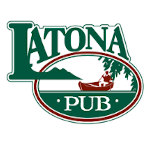
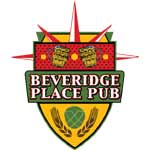
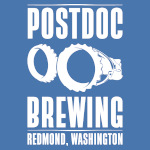

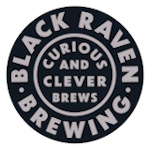
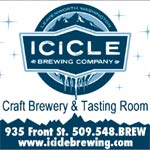
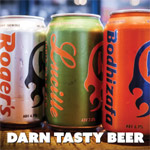
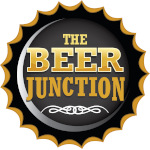
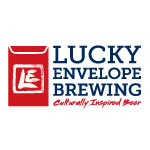
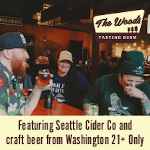

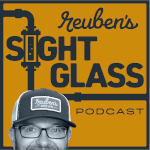

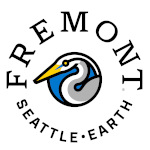
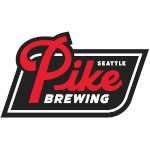

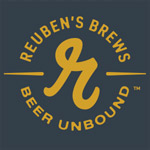
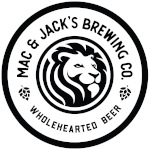
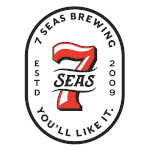
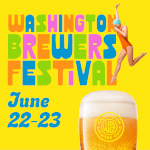







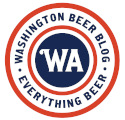
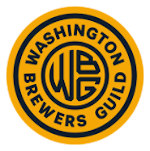
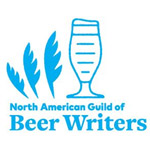

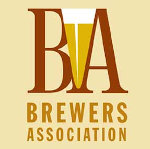
This is a great article. How lucky are we that this is an issue. What a great problem to have. I say maybe we should be a little protective of what these brewers and beer drinkers have worked so hard to build, but for now, there’s room for some competition. Great conversation to have at the local pub over 2 or 8 pints.
This is a great article. How lucky are we that this is an issue. What a great problem to have. I say maybe we should be a little protective of what these brewers and beer drinkers have worked so hard to build, but for now, there’s room for some competition. Great conversation to have at the local pub over 2 or 8 pints.
“four beers”
I was just pondering the other day how it came about that just about every bar/grill/etc near me has these beers yet don’t feature the local craft breweries (or at least not so far)? I might get lucky and find Mannys on tap, which I like, but I would love to see some of the other good beers showing up on the handles at the local bar. what does it take?
“four beers”
I was just pondering the other day how it came about that just about every bar/grill/etc near me has these beers yet don’t feature the local craft breweries (or at least not so far)? I might get lucky and find Mannys on tap, which I like, but I would love to see some of the other good beers showing up on the handles at the local bar. what does it take?
Well, my opinion is that the local breweries here in WA need to step it up by more advertising and more distributing. Russian River and 21A both started small and have worked their way up. And its the same way here, lots of small breweries and some of them just need to take that jump and hope that more distributors and bars/restaurants want to sell that breweries product.
As for taking that jump, how many of these breweries are contenders in the GABF? If they’re getting medals and doing good, you would hope its giving the brewers/owners to take the jump and let them know more people will surely like their beer. But, there’s a lot of breweries out there that love to keep it small. Look at Diamond Knot, my favorite local brewery, and they’re really the only bar in the town of Mukilteo, while still having a northern location in Comano Island.
I don’t know a lot of brewers/owners personally, but love a lot of the local stuff around here and beers out of state, but I don’t know how hard they push their product. I’m sure each brewery does, but I guess just keep pushing it. I’d love to see my favorite brewery send beer to Idaho, Oregon, Montana, etc. Its not a lot of places, but its a start.
Thats just my thought.
Well, my opinion is that the local breweries here in WA need to step it up by more advertising and more distributing. Russian River and 21A both started small and have worked their way up. And its the same way here, lots of small breweries and some of them just need to take that jump and hope that more distributors and bars/restaurants want to sell that breweries product.
As for taking that jump, how many of these breweries are contenders in the GABF? If they’re getting medals and doing good, you would hope its giving the brewers/owners to take the jump and let them know more people will surely like their beer. But, there’s a lot of breweries out there that love to keep it small. Look at Diamond Knot, my favorite local brewery, and they’re really the only bar in the town of Mukilteo, while still having a northern location in Comano Island.
I don’t know a lot of brewers/owners personally, but love a lot of the local stuff around here and beers out of state, but I don’t know how hard they push their product. I’m sure each brewery does, but I guess just keep pushing it. I’d love to see my favorite brewery send beer to Idaho, Oregon, Montana, etc. Its not a lot of places, but its a start.
Thats just my thought.
Drink local? I think you’re worrying it about too much. This whole eat local, drink local, etc thing is something I never encountered on the east coast. Maybe it has emerged in the last 5 years, or maybe it is specific to the west coast. Either way, I wouldn’t worry so much about it.
Those top four beers, like Alaskan Amber, got to where they are because they brewed an excellent beer and marketed and packaged it in the right way and probably had an element of luck and good timing too. They had local support also, but that’s not how they became a nationally top selling beer.
It’s nice to have lots of local breweries, but I think a region can get to a saturation point where there are too many local breweries. If we had 500 local breweries would that be better than 100? What about 1000 or 2000?
We should support good microbreweries no matter where they’re located.
Drink local? I think you’re worrying it about too much. This whole eat local, drink local, etc thing is something I never encountered on the east coast. Maybe it has emerged in the last 5 years, or maybe it is specific to the west coast. Either way, I wouldn’t worry so much about it.
Those top four beers, like Alaskan Amber, got to where they are because they brewed an excellent beer and marketed and packaged it in the right way and probably had an element of luck and good timing too. They had local support also, but that’s not how they became a nationally top selling beer.
It’s nice to have lots of local breweries, but I think a region can get to a saturation point where there are too many local breweries. If we had 500 local breweries would that be better than 100? What about 1000 or 2000?
We should support good microbreweries no matter where they’re located.
Trav – I suppose that all you can do is mention to your bartender or pub owner that you wish their bar offered a more local choice since they are operating their local business in a place where there are local businesses making beer.
Isnt it really all about distribution? Example – My local sports bar has 10 beers on tap and they say that 6 belong to Columbia and 4 belong to K&L. They are the two big distributors in King County. They call it “sponsorship.” Sounds like payola to me. They tell me that very few local breweries are distributed by either of those companies, so they won’t ever be on tap.
Ha ha, yes. I suppose the whole eat local and drink local movement is a west coast thing. We try to avoid burning coal, also.
Trav – I suppose that all you can do is mention to your bartender or pub owner that you wish their bar offered a more local choice since they are operating their local business in a place where there are local businesses making beer.
Isnt it really all about distribution? Example – My local sports bar has 10 beers on tap and they say that 6 belong to Columbia and 4 belong to K&L. They are the two big distributors in King County. They call it “sponsorship.” Sounds like payola to me. They tell me that very few local breweries are distributed by either of those companies, so they won’t ever be on tap.
Ha ha, yes. I suppose the whole eat local and drink local movement is a west coast thing. We try to avoid burning coal, also.
This jumped out at me:
How, you may ask, can that be? Instead of thinking of it as four states, think of it as four beers: Sierra Nevada Pale Ale, New Belgium Fat Tire, Deschutes Mirror Pond Pale Ale, and Alaskan Amber.
How depressing if true. Sierra Nevada is ok in a pinch. Fat Tire is just bad, IMHO. Deschutes I can understand and Alaskan lacks “oomph” (technical term, that). Of those four none would be a first choice and I’d consider not drinking if Fat Tire was the only option.
Maybe this betrays my level of geekishness over WA beer but it shocks me that WA is fourth in consumption here. I just don’t understand it. Are people really that uninformed about the great options from within our own state?
One possible explanation (and big frustration for me): The thing that hurts what I consider to be some of the better WA beers is that they don’t bottle. Most of my favorites don’t and I go out of my way to fill growlers with them when possible. I believe I’m an exception in this regard, most people are not going to go through so much effort to get beer, they’ll take what’s at the store. Even I am incredibly frustrated by this and I’m pretty dedicated to getting what I want, imagine how many people would likely drink their beer but have long since given up jumping through the extra hoops to attain it.
When are WA breweries going to figure this out? Bottle it, get it in stores and you’ll sell more. They don’t need to be in every 7-Eleven in the state, just start by bottling enough to get into the specialty stores at least.
An example of this is Georgetown Brewery, I love the Choppers Red and Super Chop but only found out they even exist when I stopped by the brewery a few months ago. As far as I know you can only get those beers at the brewery itself (whose hours are not very good) and maybe a pub or two nearby. You aren’t going to sell much that way. Manny’s is easy to find, but once again you have to make the trip to the brewery to get Manny’s to drink at home and then only in growlers. I’m sure it’s no easy task to bottle and distribute but at the same time I think there’s a market they aren’t tapping into.
Or maybe I’m an extreme minority and my favs just wouldn’t sell.
This jumped out at me:
How, you may ask, can that be? Instead of thinking of it as four states, think of it as four beers: Sierra Nevada Pale Ale, New Belgium Fat Tire, Deschutes Mirror Pond Pale Ale, and Alaskan Amber.
How depressing if true. Sierra Nevada is ok in a pinch. Fat Tire is just bad, IMHO. Deschutes I can understand and Alaskan lacks “oomph” (technical term, that). Of those four none would be a first choice and I’d consider not drinking if Fat Tire was the only option.
Maybe this betrays my level of geekishness over WA beer but it shocks me that WA is fourth in consumption here. I just don’t understand it. Are people really that uninformed about the great options from within our own state?
One possible explanation (and big frustration for me): The thing that hurts what I consider to be some of the better WA beers is that they don’t bottle. Most of my favorites don’t and I go out of my way to fill growlers with them when possible. I believe I’m an exception in this regard, most people are not going to go through so much effort to get beer, they’ll take what’s at the store. Even I am incredibly frustrated by this and I’m pretty dedicated to getting what I want, imagine how many people would likely drink their beer but have long since given up jumping through the extra hoops to attain it.
When are WA breweries going to figure this out? Bottle it, get it in stores and you’ll sell more. They don’t need to be in every 7-Eleven in the state, just start by bottling enough to get into the specialty stores at least.
An example of this is Georgetown Brewery, I love the Choppers Red and Super Chop but only found out they even exist when I stopped by the brewery a few months ago. As far as I know you can only get those beers at the brewery itself (whose hours are not very good) and maybe a pub or two nearby. You aren’t going to sell much that way. Manny’s is easy to find, but once again you have to make the trip to the brewery to get Manny’s to drink at home and then only in growlers. I’m sure it’s no easy task to bottle and distribute but at the same time I think there’s a market they aren’t tapping into.
Or maybe I’m an extreme minority and my favs just wouldn’t sell.
I drink locally for the same reasons that I eat at Eagan’s in Tumwater as opposed to the Burger King down the street. For me there is value in eating at a place, or supporting a brewery that is a part of the community, and contributes to the community. Drinking a pint of Dick’s Danger Ale (a brewery that does bottle beer, in fact they just got a new bottling machine to increase their bottle production) or stopping downtown for a Fish Organic IPA is about doing something that you can only do here, not in Anysuburb, USA.
Usually I can get a Manny’s Pale or a Mac and Jack’s African Amber at most places that have a decent tap selection, but I would love if more Washington breweries could get into my local bars.
I drink locally for the same reasons that I eat at Eagan’s in Tumwater as opposed to the Burger King down the street. For me there is value in eating at a place, or supporting a brewery that is a part of the community, and contributes to the community. Drinking a pint of Dick’s Danger Ale (a brewery that does bottle beer, in fact they just got a new bottling machine to increase their bottle production) or stopping downtown for a Fish Organic IPA is about doing something that you can only do here, not in Anysuburb, USA.
Usually I can get a Manny’s Pale or a Mac and Jack’s African Amber at most places that have a decent tap selection, but I would love if more Washington breweries could get into my local bars.
What Jason says…
When I go out, I nearly always choose Washington beer. There are such delicious selections on tap nearly everywhere. It’s a nice treat at $4.00 a pint.
The grocery store on the way home from work is another story. Then, it is Full Sail, from Oregon, nearly always on sale, and a tad nicer than the Widmer, from Washington, at the same price. Curiously, it is only a tad more expensive than the Rainier.
Why is that???
And how much would it cost for a six-pack of Manny’s?
What Jason says…
When I go out, I nearly always choose Washington beer. There are such delicious selections on tap nearly everywhere. It’s a nice treat at $4.00 a pint.
The grocery store on the way home from work is another story. Then, it is Full Sail, from Oregon, nearly always on sale, and a tad nicer than the Widmer, from Washington, at the same price. Curiously, it is only a tad more expensive than the Rainier.
Why is that???
And how much would it cost for a six-pack of Manny’s?
Jason hits the nail on the head, the brewers big and small bottle their beer and get it to grocery stores where Oregonians can drink it at home. Washington is largely unrepresented in the grocery store. My brother in Klamath Falls can get bottles of Roots, a small Portland brewery. A similar dynamic does not exist in Washington. When I go to Seattle to visit my in-laws I drink Oregon beer: 1. because I love it and 2. because it is readily available.
a.g. – I realize that Redhook and Widmer are under the same corporate ownership, but please don’t try to claim them as a Washington brewery, all their production takes place in Portland and is one of the oldest craft breweries in the state.
Jason hits the nail on the head, the brewers big and small bottle their beer and get it to grocery stores where Oregonians can drink it at home. Washington is largely unrepresented in the grocery store. My brother in Klamath Falls can get bottles of Roots, a small Portland brewery. A similar dynamic does not exist in Washington. When I go to Seattle to visit my in-laws I drink Oregon beer: 1. because I love it and 2. because it is readily available.
a.g. – I realize that Redhook and Widmer are under the same corporate ownership, but please don’t try to claim them as a Washington brewery, all their production takes place in Portland and is one of the oldest craft breweries in the state.
Doh! You’re right. Sheesh.
as a WA brewer (who does not bottle) its awesome to hear so much support and concern over the slow numbers of WA beer consumption here. You’re right, of course, more bottled beer means more shelf space, which means more sales, but it’s a bit more complicated than just jamming it into a bottle. The capital investment required to bottle with any quality control is considerable. Shelf product requires a whole new marketing strategy, different promotions, sales staff, etc.
Two of the biggest WA brewers (by volume) don’t filter their flagships which makes for a tough product to bottle, and they need to be served fresh. Managing a product in many stores is considerably more difficult than in bars.
Brewery owners are in tough positions because pushing their beer on draft may mean another WA brewer is bumped off. And if not a WA brewer, presumably another craft brewer. There is a double edged sword to growth.
I guess I’m just defending the brewers a little bit, we’re not timid about being available to the consumer, we’re just trying to maintain responsible growth levels. In the end I think we both (beer lovers and beer makers) are looking for the same thing. If we could give you all a tasty WA beer every time you wanted one we’d all be happy right. But please keep pushing for it everywhere you go. It makes all the difference.
as a WA brewer (who does not bottle) its awesome to hear so much support and concern over the slow numbers of WA beer consumption here. You’re right, of course, more bottled beer means more shelf space, which means more sales, but it’s a bit more complicated than just jamming it into a bottle. The capital investment required to bottle with any quality control is considerable. Shelf product requires a whole new marketing strategy, different promotions, sales staff, etc.
Two of the biggest WA brewers (by volume) don’t filter their flagships which makes for a tough product to bottle, and they need to be served fresh. Managing a product in many stores is considerably more difficult than in bars.
Brewery owners are in tough positions because pushing their beer on draft may mean another WA brewer is bumped off. And if not a WA brewer, presumably another craft brewer. There is a double edged sword to growth.
I guess I’m just defending the brewers a little bit, we’re not timid about being available to the consumer, we’re just trying to maintain responsible growth levels. In the end I think we both (beer lovers and beer makers) are looking for the same thing. If we could give you all a tasty WA beer every time you wanted one we’d all be happy right. But please keep pushing for it everywhere you go. It makes all the difference.
j.w.
Thanks for the thoughtful and informative reply. I mentioned in my original post that the whole packaging and distribution thing is a whole ‘nother issue. I have actually considered doing an entire post about the challenges and rewards of bottling (or canning) because I think too many people simply say, “Put it in six packs and you’ll sell more beer.”
I think that what all of us craft beer lovers -brewers included- would love to see is more pubs like the Beveridge Place, the Parkway, the Eastside Club, Collins Pub, the Latona, the Dog & Pony, and the many others I’m not mentioning – pubs operated by publicans who really support craft beer. We need more craft handles – more room for our locals to get on tap without pushing another local out of the way. A friend once told me, “I don’t want to replace every Manny’s handle, I want to be right next to every Manny’s handle.” Cheers to that!
j.w.
Thanks for the thoughtful and informative reply. I mentioned in my original post that the whole packaging and distribution thing is a whole ‘nother issue. I have actually considered doing an entire post about the challenges and rewards of bottling (or canning) because I think too many people simply say, “Put it in six packs and you’ll sell more beer.”
I think that what all of us craft beer lovers -brewers included- would love to see is more pubs like the Beveridge Place, the Parkway, the Eastside Club, Collins Pub, the Latona, the Dog & Pony, and the many others I’m not mentioning – pubs operated by publicans who really support craft beer. We need more craft handles – more room for our locals to get on tap without pushing another local out of the way. A friend once told me, “I don’t want to replace every Manny’s handle, I want to be right next to every Manny’s handle.” Cheers to that!
I had my first Manny’s last week and it was fantastic. Seattle Beers are under-rated. I just wish I could get it at a store.
Seattle Beer
http://www.pacificnorthwestcoastbias.com/great-local-beer-mannys/
I had my first Manny’s last week and it was fantastic. Seattle Beers are under-rated. I just wish I could get it at a store.
Seattle Beer
http://www.pacificnorthwestcoastbias.com/great-local-beer-mannys/